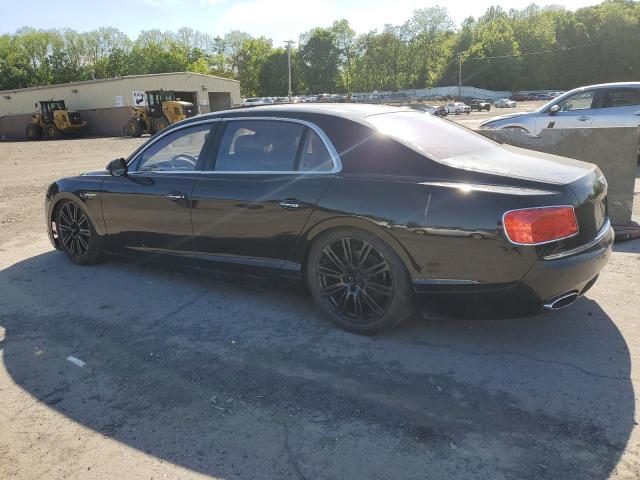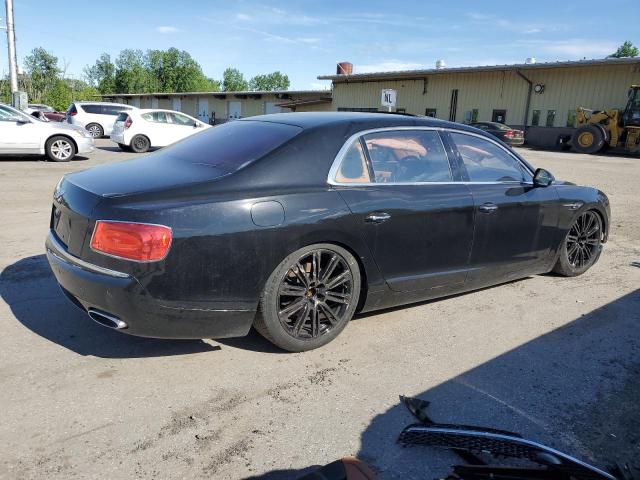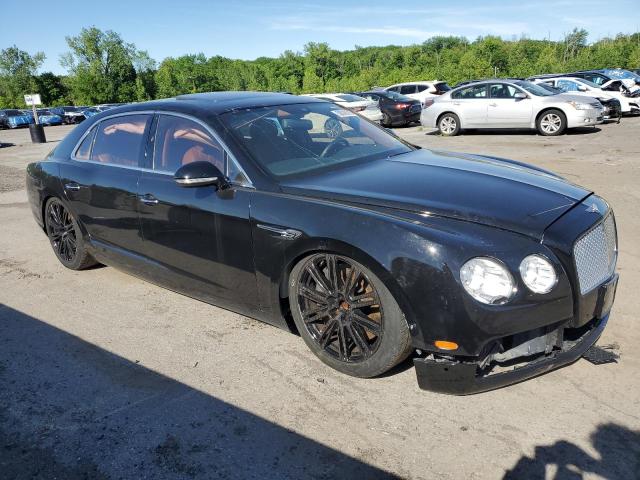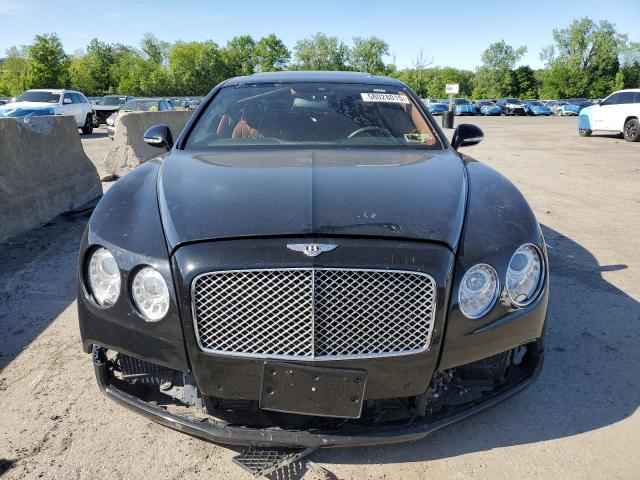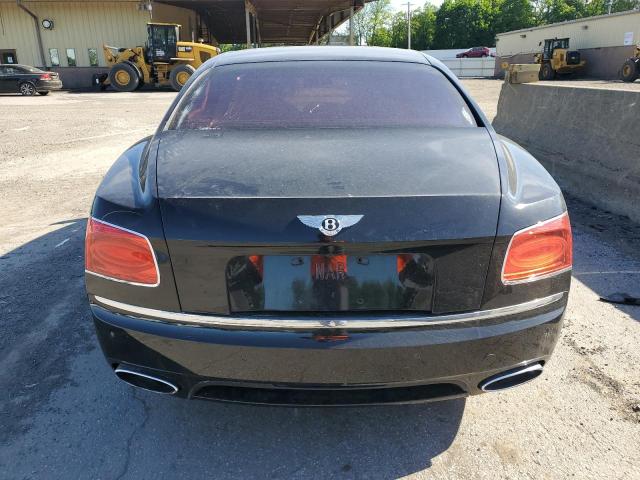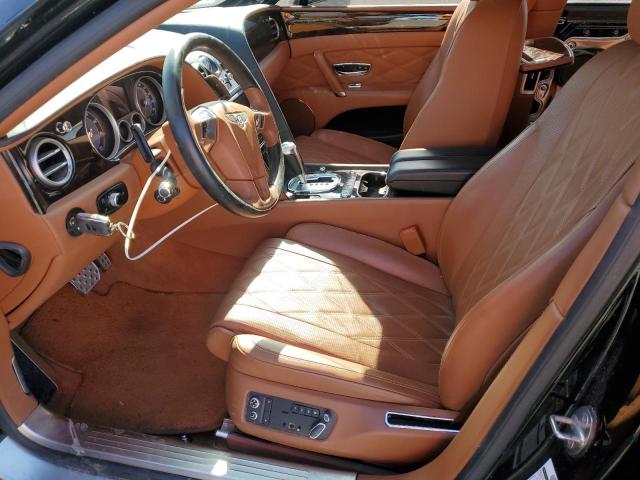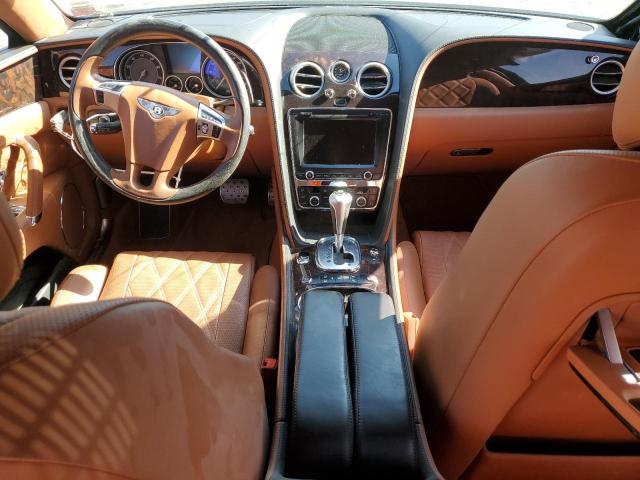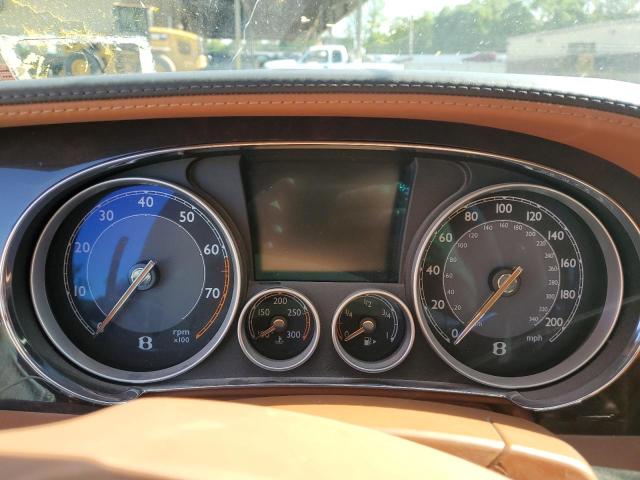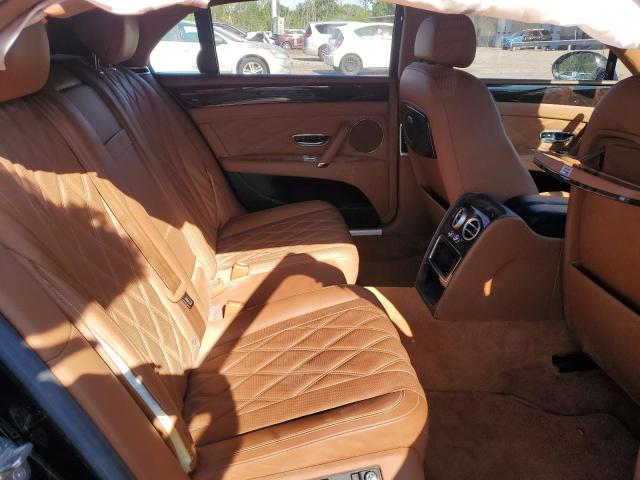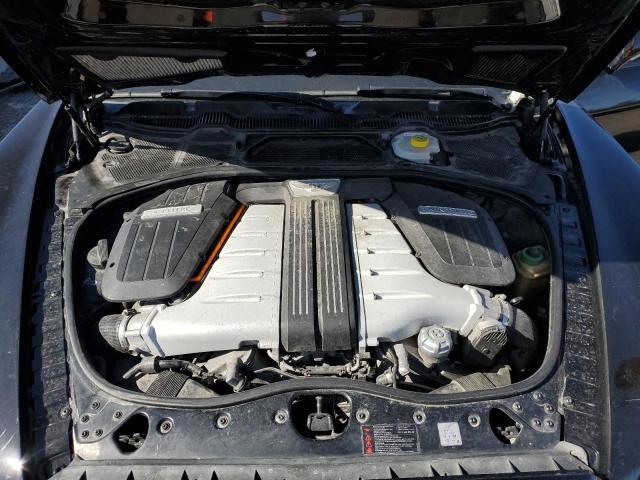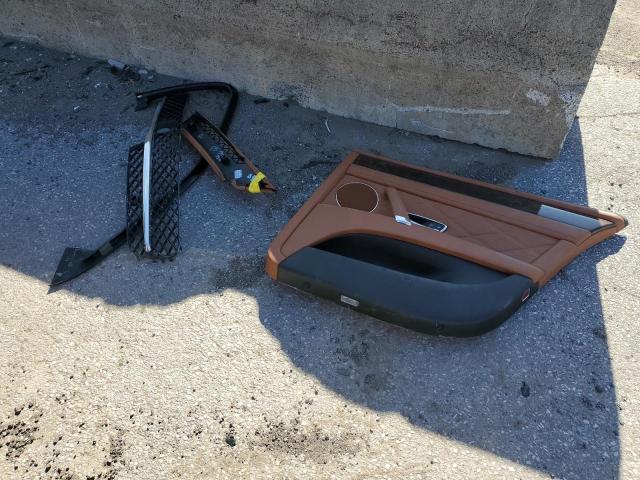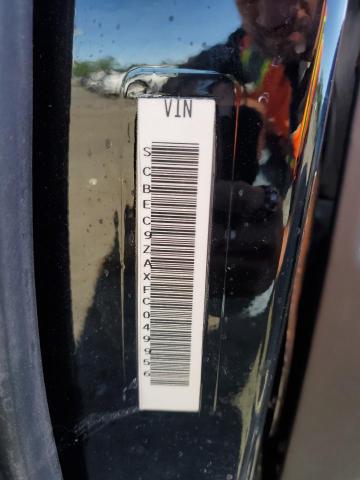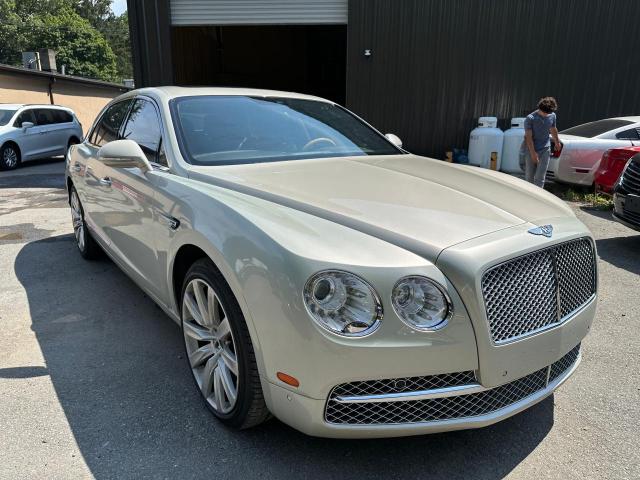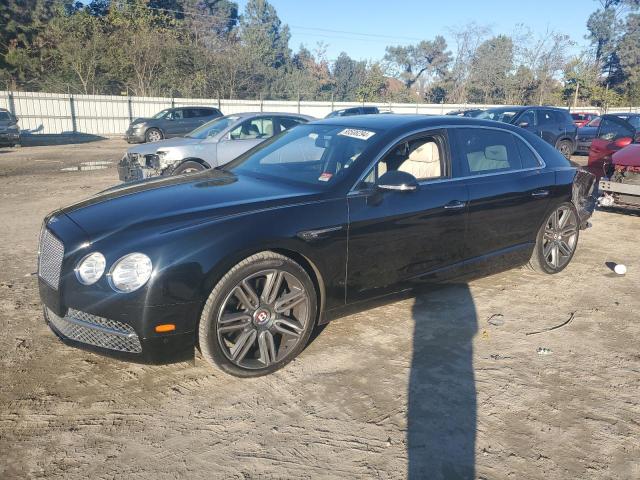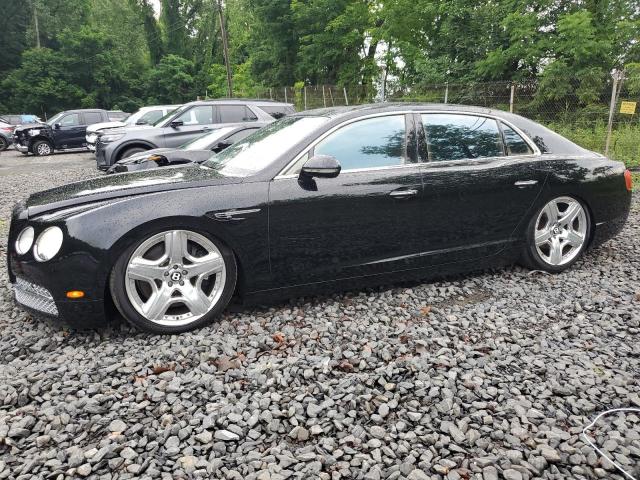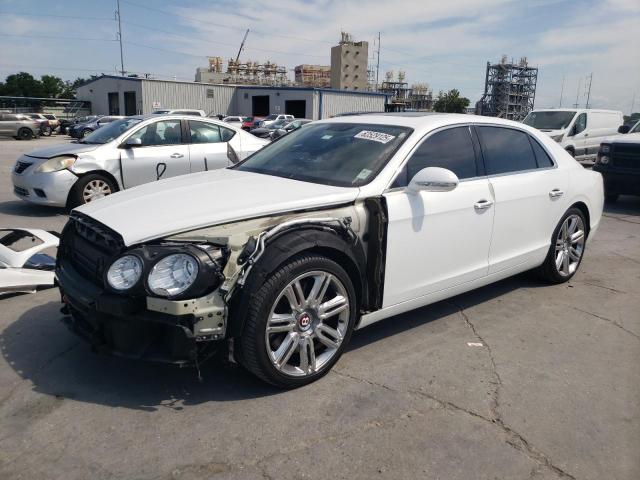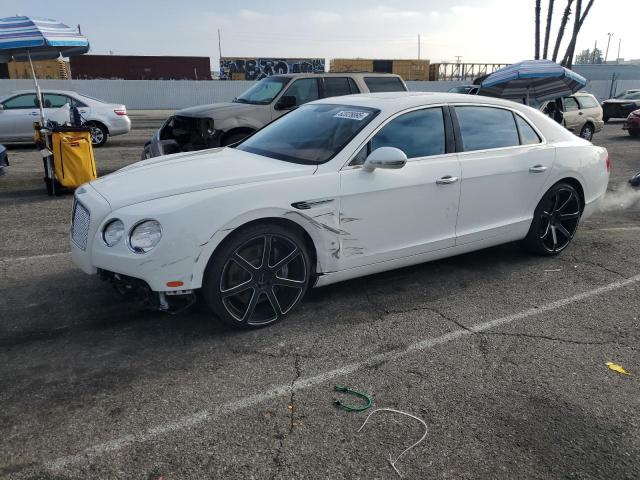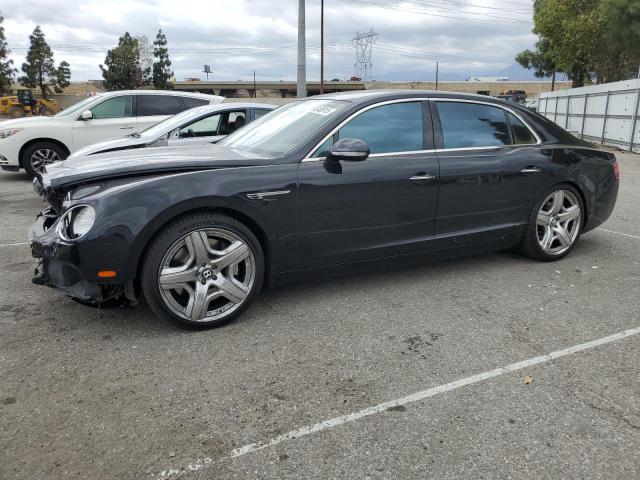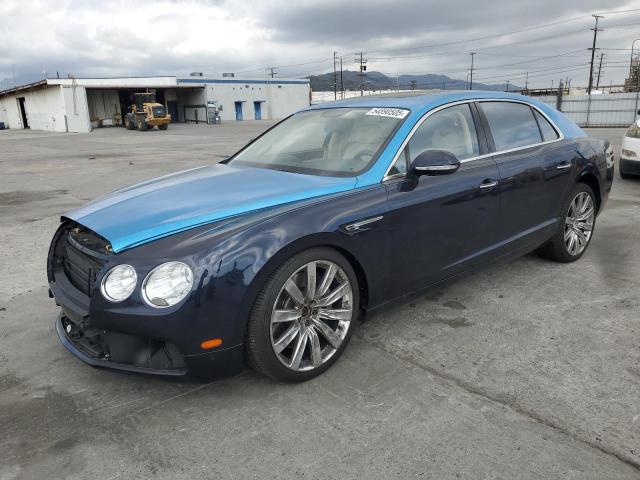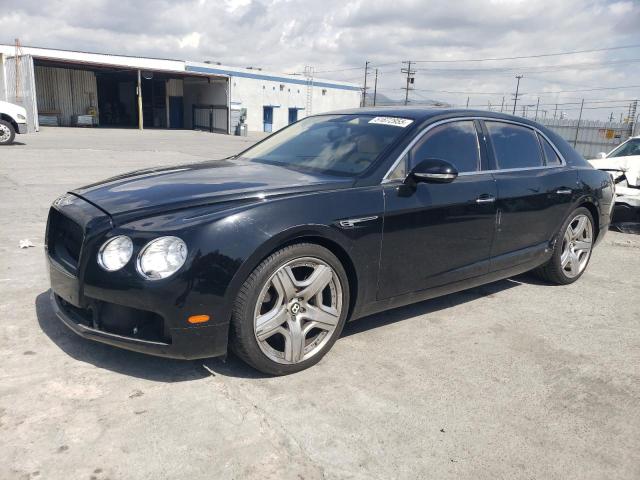2015 BENTLEY FLYING SPUR | SCBEC9ZAXFC049956
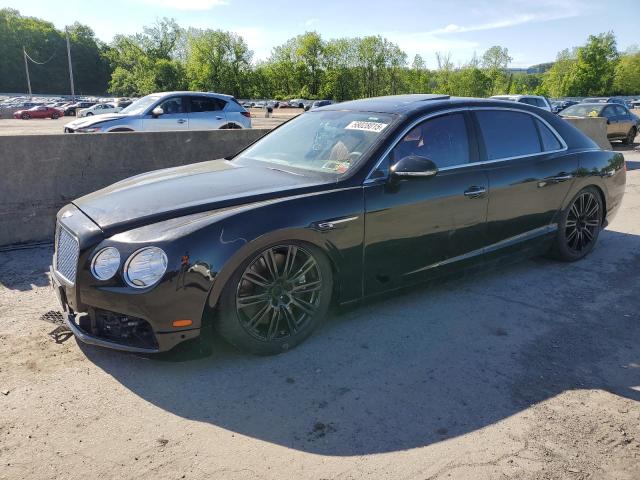 ❯
❯Lot details
- Sale Date2025-06-12
- Lot Number60250765
- ACV83594.4 $
- Sale documentMN - CERT OF TITLE-SALVAGE
- LocationNY - NEWBURGH
- Odometer0 miles (0 km)
- Primary DamageFRONT END
- Secondary DamageTOP/ROOF
Vehicle details
- Make
- Model
- Year2015
- FuelFLEXIBLE FUEL
- Engine6.0L 12
- TransmissionsAUTOMATIC
- Drive TypeAll wheel drive
Vehicle specifications
3
~$240,000
Engine: 6.0L twin-turbocharged W12
Torque: 820 Nm
0–100 km/h: ~4.2 s
Despite its size and luxury-oriented character, the Bentley Flying Spur offered serious performance, especially in its W12 S and V8 S variants. The W12 S was the first four-door Bentley to exceed 200 mph (325 km/h), with 635 hp and 820 Nm from its twin-turbocharged 6.0L W12. Thanks to its ZF 8-speed automatic and permanent all-wheel drive, the Flying Spur could launch from 0–100 km/h in as little as 4.2 seconds, making it one of the fastest luxury sedans of its time.
The V8 and V8 S models, with 500–521 hp respectively, offered lighter front-end dynamics and a more agile chassis. The V8 S in particular featured recalibrated suspension, sharper steering, and a more responsive throttle map, bringing a sportier driving experience to Bentley’s executive sedan lineup.
All versions used air suspension with continuous damping control, enabling confident cornering and adaptive comfort. While not a track-focused machine, the Flying Spur delivered effortless speed and composure at triple-digit cruising, making it a sporty grand tourer in limousine form.
Final Bid Bentley Flying Spur (2015)
$15,300
$23,225
$38,250
Body Styles
The Flying Spur was offered exclusively as a four-door luxury sedan, with elegant proportions, wide fenders, and a muscular stance. Compared to the two-door Continental GT, the Flying Spur featured a longer wheelbase, enhanced rear passenger space, and a stately presence suitable for chauffeured or owner-driven roles.
Design elements included Bentley’s quad circular headlights, wide matrix grille, sharp character lines, and a tapered rear end with oval or horizontal tail lamps (depending on year). W12 S and V8 S trims added blacked-out grilles, sporty lower front bumpers, and gloss-black or dark chrome details, emphasizing a more dynamic identity.
Model Name Meaning (Manufacturer)
“Flying Spur” originates from the coat of arms of the family that once owned coachbuilder H.J. Mulliner, which Bentley acquired in the 1950s. The name was first used on a variant of the Bentley S1 in 1957. It symbolizes motion, speed, and elegance — aligning with the car’s identity as a performance-oriented luxury sedan.
Model Name Meaning (Languages)
While “Flying Spur” is a heritage name without a direct translation, its English aristocratic tone conveys motion, heritage, and prestige. The word “spur” evokes both equestrian tradition and a metaphorical push toward speed and excellence, complementing the car’s blend of performance and grace.
Body & Interior Colors and Rims
The Flying Spur was available in a vast range of standard, optional, and custom “Mulliner Bespoke” colors, including Beluga Black, Onyx, Hallmark, Glacier White, Windsor Blue, and Extreme Silver. Two-tone paint schemes and satin finishes were available through special orders.
Inside, Bentley offered over 17 interior leather colors, all sourced from Northern European bulls for uniformity, with choices like Linen, Burnt Oak, Saddle, Hotspur, and Imperial Blue. Veneer options included Burr Walnut, Piano Black, Dark Fiddleback Eucalyptus, Liquid Amber, and Carbon Fiber in V8 S/W12 S models.
Every interior featured diamond-quilted seats, hand cross-stitching, and deep-pile floor mats. Rear-seat options ranged from bench seats to individual heated, ventilated, massaging chairs with picnic tables, wireless headphones, and remote infotainment controllers.
Wheels ranged from 19-inch multi-spokes to optional 21-inch directional alloys, available in finishes like Bright Machined, Dark Tint, or Polished, with red or black brake calipers depending on engine choice.
Top Expensive Options
- Mulliner Driving Specification (quilted leather, sport pedals, 21" wheels): $17,000
- Rear Seat Entertainment with Dual Screens and Bluetooth Headphones: $9,800
- Naim for Bentley 2,200W Audio System with 20 Speakers: $8,900
- Rear Individual Seating with Massage & Ventilation: $7,200
- Carbon Ceramic Brakes with Painted Calipers: $13,200
- Veneered Picnic Tables with Vanity Mirrors: $3,800
- Extended Range Metallic Paint (Mulliner): $6,000
- Alcantara Headliner and Pillars: $3,000
- Adaptive Cruise Control with Stop & Go: $2,800
- Refrigerated Bottle Cooler with Champagne Flutes: $4,500
vs Competitors
The Flying Spur competed with the Mercedes-AMG S63/S65, Audi S8 Plus, and Maserati Quattroporte GTS. The Mercedes offered superior infotainment and driver assistance tech; the Audi had sharper handling and lower weight. The Bentley, however, stood apart with hand-built quality, a higher degree of personalization, and an effortless combination of performance and luxury. Its ride quality and cabin finish were peerless, while the W12 S added genuine super-sedan speed to the equation.
The Flying Spur’s true appeal lay in its grand touring ability: quiet, opulent, and capable of enormous speed over long distances. It wasn’t as shouty as an AMG or as minimalist as an Audi — it was a Bentley, with a character all its own.
Fun Fact
Every Flying Spur from this generation was hand-built in Crewe, England, with each W12 engine assembled by hand in VW’s engine plant in Salzgitter, Germany. Each vehicle required over 130 hours of build time, and the diamond-quilted leather pattern alone took over 26 hours to stitch. The W12 S was the first four-door Bentley to reach 202 mph (325 km/h) — placing it firmly in supercar territory while surrounding its occupants in unmatched luxury.



